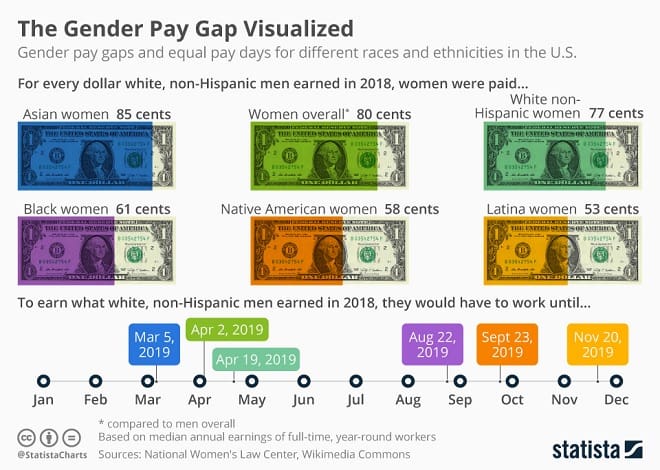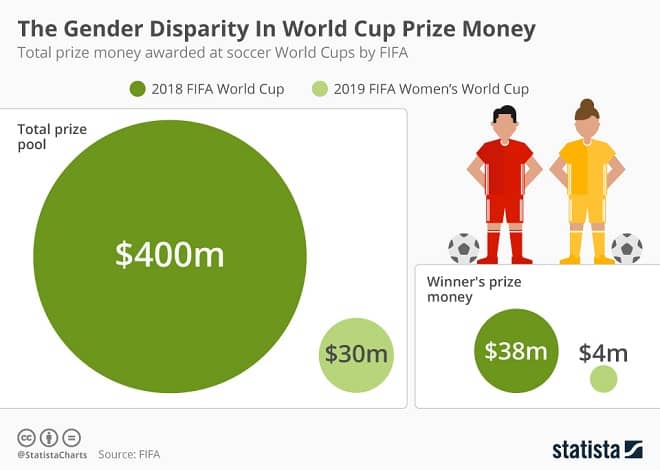Source: Statista
The U.S. women’s soccer team World Cup win in France in the beginning of July brought the gender pay gap, in sports and elsewhere, back into the spotlight in the U.S. The team around captain Megan Rapinoe took home US$4 million, compared to US$38 million for the winners of men’s soccer World Cups.
Back in March, the U.S. team also filed a gender discrimination lawsuit against the U.S. Soccer Federation, demanding that female U.S. soccer players get paid as much as their male counterparts. While the U.S. women’s team is the most successful national team in the world with four World Cup wins since 1991 and four Olympic titles since 1996, the U.S. men’s team didn’t qualify for the 2018 World Cup and placed in the top 10 only twice since 1930.
But this instance does not only affect female athletes. On average, American working women are paid 80 cents for every dollar that working men make.
For some ethnicities however, the pay gap is much larger than that, as data provided by the National Women’s Law Center shows. While Asian American women get paid more than the average woman in the U.S., Latina women, Native American women and Black women fare much worse.
Latinas get paid no more than 53 cents for every dollar white, non-Hispanic men make. According to these earnings Latina’s Equal Pay Day is almost eight months later than for women overall. While the average woman in the U.S. would have to work until April 2, 2019, to earn as much as the average man, Latinas would have to work until Nov 20 to earn as much as white, non-Hispanic men earned in 2018. This date is Sept 23 for Native women and Aug 22 for Black women.


